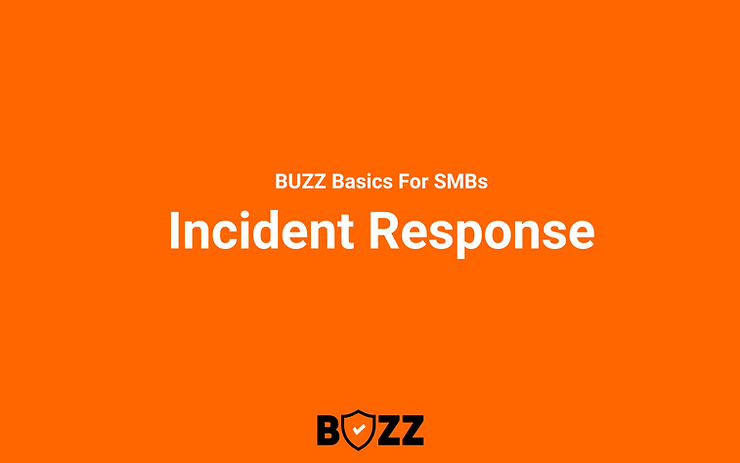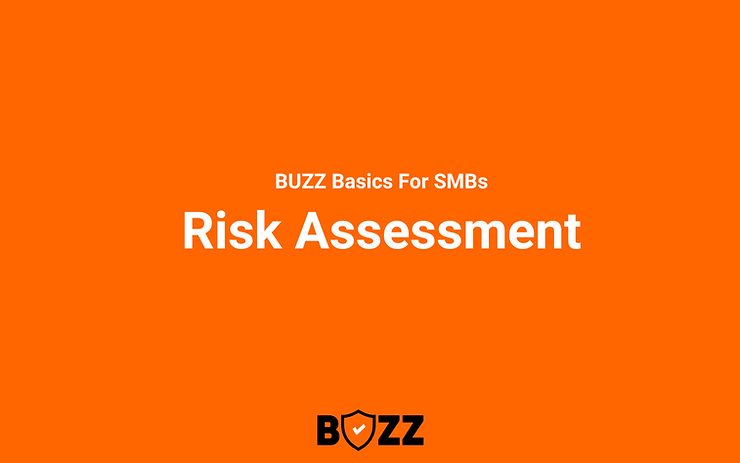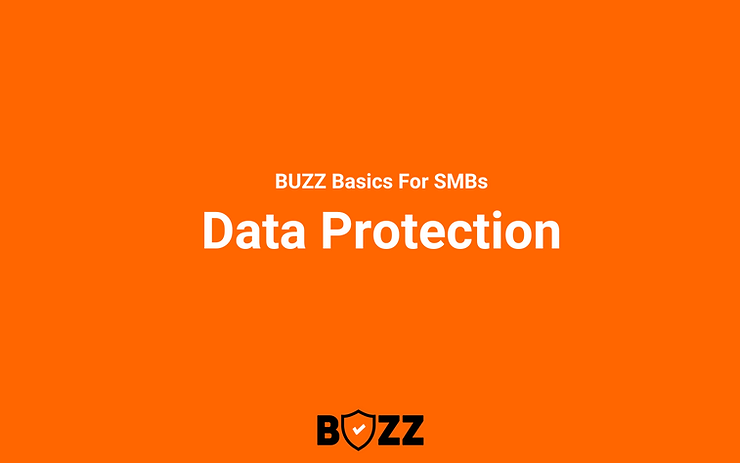“The only truly secure system is one that is powered off, cast in a block of concrete and sealed in a lead-lined room with armed guards.”
~~ Gene Spafford, Cybersecurity Advisor to the US Government Agencies
Have you seen the Academy-award-winning 2019 movie, Parasite? The unpreparedness and ignorance of the owners gave intruders a chance to leech on resources that didn’t belong to them. And the exploitation continued for months!
A security breach in the cyber world is no different.
Attackers are always on the lookout to steal data from ill-prepared companies — both big and small — and ask for a hefty ransom in return. Companies that practice poor cybersecurity hygiene are at maximum risk of suffering from a serious security breach. Result? Insane financial losses and reputation damage.
The entire process of getting prepared to face a cyberattack is known as incident response. A well-structured incident response plan includes –
Prepping the company to deal with an attack in real-time
Arming the company with different incident response tools to monitor systems and promptly raise an alert in case a security breach occurs. Time is of absolute essence in cyber attacks
Isolating the identified threat and quickly — as quickly as possible — navigating out of the situation to minimize losses
Amping up the defense after the attack to keep the company prepared for any future cyberattacks
Sounds simple, right? Well, in actuality, the incident response process is anything but simple. So, we took it upon ourselves to help all of you SMBs understand the cybersecurity landscape better.
Suppose this piques your interest and you want to safeguard your company assets. In that case, this post about the importance of a security incident response framework for small and medium-sized businesses is a goldmine of answers!
We will walk you through the ins and outs of incident response in detail — how different security organizations classify it, its relevance for you, the incident response steps, and more. Dive in!
Incident Response for SMBs – What can you expect
Is Incident Response Really Relevant to SMBs?
What is an Incident Response Plan?
The Incident Response Process — In-depth Evaluation Of The Incident Response Steps
How to Get Started — A Handy Check-list for SMBs
Types Of Security Threats/ Attacks that Incident Response Tackles
What is Incident Response?
Have you ever baked bread or cake? Isn’t it a meticulous procedure — you have to preheat the oven and wear heat-repelling gloves? If you won’t, you’ll burn your hands. Incident response is almost similar!
It’s a plan of action that aware companies implement to be ready when facing the heat of cyber attacks. It starts from preparation and extends to monitoring, detection, threat isolation, recovery, restoration, and post-attack security strengthening measures.
The National Institute of Standards and Technology (NIST) and the SANS Institute have classified the steps in the incident response lifecycle slightly differently. While the process and motive are the same — preparedness and quick recovery in case of a real-time attack — the number of steps varies in both types.
#1. The NIST Incident Response
The incident response plan nist is a 4-step process.
- Preparation against cyber attacks
- Threat detection and analysis
- Containing the attack, and recovery
- Post-incident cybersecurity strengthening measures
#2. The SANS Institute Incident Response Cyber Security Plan
The incident response plan by SANS has 6 steps.
- Preparation
- Identification
- Containing the damage
- Eliminating the threat
- Fixing the security breach, recovering the compromised data
- Carrying forward the lessons learnt in order to strengthen the security
No matter the difference in the number of steps in these IR plans, the incident response lifecycle starts with preparation and ends with taking lessons from an attack, further strengthening cybersecurity.
Did you know?
A few security institutes identify an incident response plan template as a 7-step process — the first 6 steps are the same as the incident response phases in SANS. The 7th additional step is re-testing after implementing new security measures post an attack.
Is Incident Response Really Relevant to SMBs?
“There are only two types of organizations: Those that have been hacked and those that don’t know it yet.”
~~ John Chambers, CEO and Chairman of Cisco Systems
And we couldn’t agree more with Mr Chambers!
Most SMBs think that cyberattacks and security breaches happen only at bigger firms. Why would hackers even look at their company when so many bigger fishes are in the pond?
How hackers have evolved and intensified phishing and malware attacks has left even giants such as Google, Facebook, and Microsoft gasping, second-guessing their preparedness.
But these giants have a fleet of cybersecurity experts and a highly trained incident response team at their beck and call — do you?
The chances that their business will cease to exist in the aftermath of a cyber attack are close to nil; they have insane funds — do you?
Most SMBs and startups lack even the basic knowledge of damage control when dealing with a security breach in real time. And the more time hackers get to fiddle with your data, the more damage they will do. So, until and unless you’re prepared with a solid cyber incident response plan, there’s no way you will be able to protect your assets from being misused.
While there’s no way to have unbreachable immunity against cyber attacks, it’s the readiness that matters the most.
What is an Incident Response Plan?
“You can never protect yourself 100%. What you do is protect yourself as much as possible and mitigate risk to an acceptable degree. You can never remove all risk.”
~~ Kevin Mitnick, Convicted American Hacker and Security Consultant
Cyber security incident response is the process that aims to safeguard your assets when hackers launch an attack.
Simply Explained
In layman’s terms, the IR plan is a broad-spectrum approach. It focuses on the What and Which, Who, When, and How involved in case unethical hackers find their way inside your systems, leading to data infringement.
‘What and Which’
It includes which types of malware/ threat the hackers used to breach the security and what is the best approach that should be followed to limit the damage.
‘Who’
It focuses on who within the company is responsible for identifying the threat and alerting other teams involved in order to contain the spread of the malware.
‘When’
It focuses on when the incident response team should follow a specific approach to tackle the security breach. It can be influenced by the type of attack that has been used for the security breach (to be discussed in the subsequent sections).
‘How’
It focuses on how different teams should individually handle the roles assigned to them when the organization is under attack.
The Incident Response Process — In-depth Evaluation Of The Incident Response Steps
You know the stages, aka the incident response plan examples, as per NIST and SANS. Let’s now help you understand what these incident response steps actually include.
Here’s what a successful incident response looks like.
#1. The Preparation Stage of the Cyber Security Incident Response Plan
Cyber incident response companies carry out the research on your behalf. They do all the groundwork and ready your organization to face an attack.
Some incident response tools you can use on the organizational level include Splunk, Datadog, and AWS Shield, Google Armor, CloudFlare. They come loaded with security features that amp up your guard against malware and phishing attacks.
#2. The Monitoring and Assessment Stage of The Security Incident Response Plan
The monitoring and assessment phase is all about protection, with the right strategies implemented, many attacks can be prevented.
Cyber incident response companies set up automated incident response tools to help you identify potential threats and nip them in the bud. They implement robust mechanisms so you can always easily monitor the security measures.
#3. The Threat Isolation Phase of the Incident Response Lifecycle
As they say, ‘one rotten apple spoils the whole barrel’. This is exactly what the third phase of the incident response plan focuses on avoiding. It’s all about containing the damage!
One of the better ways to deal with cyberattacks is by providing incident response training to employees in an organization. Aware employees are the biggest assets when it comes to not only identifying but also isolating the threat.
Incident response services help isolate the bug so you can prevent it from infiltrating the entire organization. When this phase of the incident response life cycle is successfully implemented, hackers are unable to steal all the data. Only patches of data are compromised. As a result, the losses are a bare minimum.
#4. The System Restoration Phase of the Incident Response Process
Once the threat is identified, it’s just a matter of time before hackers will cause immense damage, even lock you out of your network entirely.
The system restoration incident response service focuses on eradicating the bug from the entire organization — all systems — quickly.
All compromised data is recovered, and hackers no longer have access to sensitive information about your company — your users, employees, and clients are back to being safe!
#5. The Post-incidence Phase of the Incident Response Plan
Your company is finally off the radar of hackers. The threat has been resolved and data has been recovered. But what about the future?
Enter the post-incidence incident response step! It’s more like a vaccine – identifying the attacks that happened in the past and dodging them without suffering losses.
- Lessons learnt from the past loopholes that led to the attack
- Accordingly, new strategies are implemented to toughen your guard so that similar attacks do not happen in future.
How to Get Started — A Handy Check-list for SMBs
We know it can be daunting to set things up in the cyber terrain. So, we’ve come up with this handy check-list — it’s more like an incident response playbook!
This is how the incident response plan works.
Response Team
Identify the most important people as a part of your incident response team. Set them up as emergency contacts you can get into motion when an attack happens.
Decision Maker
Establish an authority in charge who will be responsible for making critical decisions in real-time to contain the damage.
Critical Assets
Identify the assets/ data most important and relevant to your business — it could be anything ranging from database to payments, source code, inventory management, and more.
Data Backup
Ensure that you have a backup for every significant bit of data
Types Of Security Threats/ Attacks that Incident Response Tackles
The cybersecurity incident response plan equips you with the right tools to identify and deal with attacks attempted through any of these eight techniques.
- Malware attacks
- Phishing attacks
- Unauthorized personnel trying to gain access to your system by breaching the backdoor password. The tricks include hacking and social engineering
- Privilege escalation attacks
- Insider threats — unaware employees accidentally putting the company at risk. Sometimes, data stealing can be intentional. Begrudged employees might indulge in malicious activities to sabotage the reputation of the company
- Distributed denial-of-service (DDoS) attacks
- Man-in-the-Middle (MiTM) attacks
- Advanced persistent threat
Top 3 Benefits of Practicing Incident Response
Here are the three benefits that will greet you on the other side of a cyberattack when you have a solid incident response plan set into motion.
- The financial damage won’t be as shattering. The security incident response process will restrict the damage.
- You might lose some money, but you won’t lose your reputation. Your clients won’t lose faith in your ability to protect their sensitive information. Investors, stakeholders, and the entire world will remember you as a company that was well-prepared.
- No matter the type of security attack, your team will be equipped with insane knowledge to handle every situation.
Conclusion
“It takes 20 years to build a reputation and few minutes of cyber-incident to ruin it.”
~~ Stephane Nappo, the Global Head of Information Security at Société Générale International Bank
A company is just like a fort — hackers are always vigil, plotting to catch you off-guard. And they will attack your castle when your guards are down! Unless you have a moat built around your fort, it will just be a matter of time before your organization will fall to its knees in front of someone from the dark side of the web.
Only preparation will be able to save you when that day will finally arrive.
The consequences of a cyberattack won’t apply to you when you’ll have automated incident response tools and a prepared incident response team guarding your assets. Security incident response service will limit the damage, contain and remove bugs, and restore your company to its former glory.
Frequently Asked Questions
Incident response is an organization’s plan of action that keeps the company prepared to handle all types of cybersecurity attacks.
Preparation against cybersecurity attacks and monitoring are the first two steps in the cyber incident response process.
Trying to figure out what five phases should be covered in the incident response policy? If yes, you’ve rung the right doorbell — we have the answer! Here are all the steps!
Preparation
Monitoring and assessment
Threat identification and isolation
System restoration
Learning from the attack and strengthening cybersecurity to avoid a similar situation in future
Why Choose BUZZ?
You can’t run before you learn to walk — and the cyber terrain is too rocky!
We, at BUZZ, are committed to armor SMBs with the right tools and techniques to thwart hacking attempts and deal with the security crisis.
Here is why you should choose us.
1. Tailored CyberSecurity for SMBs
Our purpose isn’t to be your crutch! We do not want to cripple your business by creating dependency.
We focus on making cyber security accessible to SMB businesses, and understand that no one size fits all.
- We assess your systems.
- We provide you with tools and strategies to protect your systems.
- We train your staff to deal with the crisis.
2. We offer affordable personalized plans
One size never fits all — and we know it!
You don’t have to buy all our services when you partner with us.
We will assess the situation and provide you with insights.
You get to choose the service(s) you feel will amp up your company’s security against cyber attacks.
All our services are affordable because we, at Buzz, believe that every business deserves to be protected.
3. Our services come from experts with 25 years of experience
We’re your navigation compass, so you do not lose your way.
Our experts can assess, protect, and train — you get all you need under one roof!
BUZZ offers –
- Vulnerability assessment
- Risk assessment
- Security architecture review
- Incident Response Training
- Security Policy Development
- Data protection
- Customized training
- Executive training
CONTACT BUZZ NOW: [email protected] |LinkedIn
Your security is our priority. Let’s build a safer digital future together.




